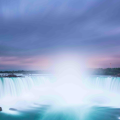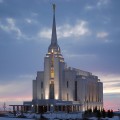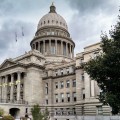Natural Beauty in Idaho Falls, Idaho
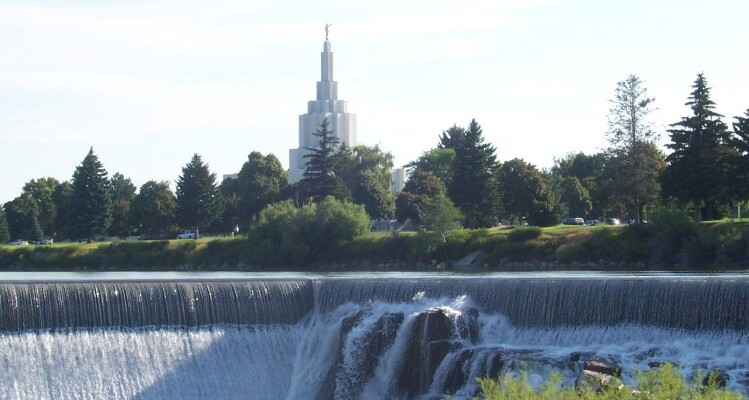
Things to do in Idaho Falls, Idaho
Idaho Falls is a charming city in eastern Idaho. Idaho Falls is located 28 miles west of Rexburg, Idaho, home to Brigham Young University-Idaho. The city of Idaho Falls is sure to leave you in awe with all of the natural beauty it possesses.
Idaho Falls, and the surrounding area, was first populated with a sparse amount of cattle and sheep ranchers. The area of Idaho Falls didn’t see any major expansion until 1864, when a gentleman by the name of Harry Rickets “built and operated a ferry on the Snake River.” The ferry served as a new way for people to travel west, and an easier, safer way to “travel on the Montana Trail following the Bear River Massacre of Shoshone Indians in 1863.” Idaho Falls became a permanent settlement after Matt Taylor “built a timber-frame toll bridge across a narrow black basaltic gorge of the river, 7 miles downstream from the ferry.” The bridge enhanced travel for “settlers moving north and west, and for miners, freighters, and others seeking riches in the gold fields of Idaho and Montana – especially the boom towns of Bannack and Virginia City.”
The bridge that Matt Taylor built had finished construction in 1865 and by the end of that year, a private bank, small hotel, livery stable, eating house, post office, and stage station had been constructed near the bridge. The settlement was first known as Taylor’s Crossing. In 1866, the town was named Eagle Rock. The name Eagle Rock came from “an isolated basalt island in the river near the ferry, where approximately 20 eagles nested.”
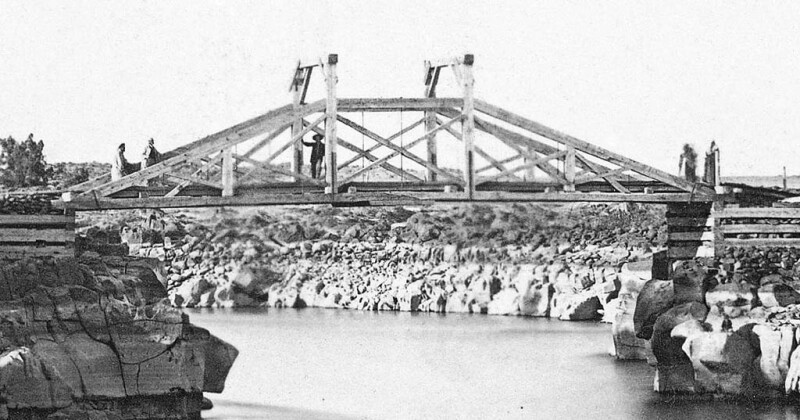
Taylor’s Bridge cira 1870 Photo Courtesy Wikipedia
In 1874, water rights were initiated on Willow Creek and “the first grain was harvested.” Eagle Rock had a small population at that time, as only a few families lived in the area. “The first child of European descent was born at Eagle Rock in 1874.” Eventually, the Utah and Northern Railway (U&NR) was constructed. The U&NR would travel north from Utah to Eagle Rock and would cross the Snake River. The U&NR eventually connected to the new copper mines at Butte, Montana. As soon as the U&NR was running through Eagle Rock, settlers began moving to the upper Snake River Valley.
The first group of new settlers built homes to the north of Egin (near present-day Parker, Idaho) and at Pooles Island (near present-day Menan, Idaho.) The Utah and Northern Railway became a convenient way to travel to and from Eagle Rock. The U&NR was a popular mode of transportation for families that moved from Utah to Eagle Rock. The families that moved from Utah to Eagle Rock successfully built irrigation systems in Utah’s Great Basin settlements and shared their knowledge when they arrived to Eagle Rock. After the irrigation canals were successfully built in Eagle Rock, water from the Snake River turned the Upper Snake River Valley “into one of the most successful irrigation projects in the [Western United States].”
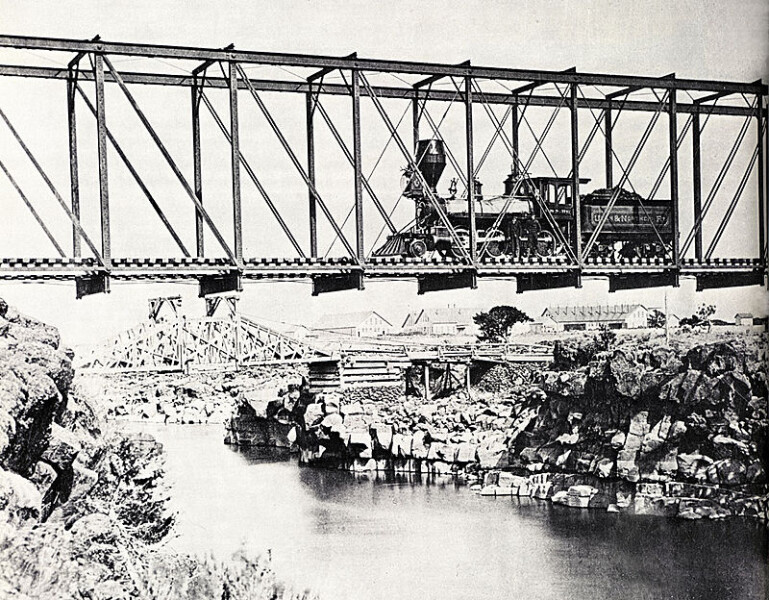
Utah and Northern Railway Bridge c. 1880, looking north, or upriver, with railroad shops in the background Photo Courtesy Wikipedia
Larger settlements begin to pop up in Eagle Rock, and within a decade, roads, bridges, and dams were built in the area, which helped the Upper Snake River Valley prosper with agricultural farming and development. In 1887, after the Oregon Short Line Railroad was built and a railroad workers’ strike took place in Eagle Rock, many of the railroad facilities were moved to Pocatello, Idaho, where the new line separated off the U&NR. Once the railroad facilities were moved to Pocatello, Eagle Rock saw a “sharp and immediate drop in population, which nearly killed the town.”
In 1891, marketers convinced the town leaders of Eagle Rock to change the name of the town, as there was concern that more farmers were not moving to the area because the name suggested the town was full of eagles and rocks. The town’s name was changed to Idaho Falls, which made reference to the rapids below the bridge. A retaining wall for a hydroelectric plant was built a few years later, and the rapids turned into waterfalls.
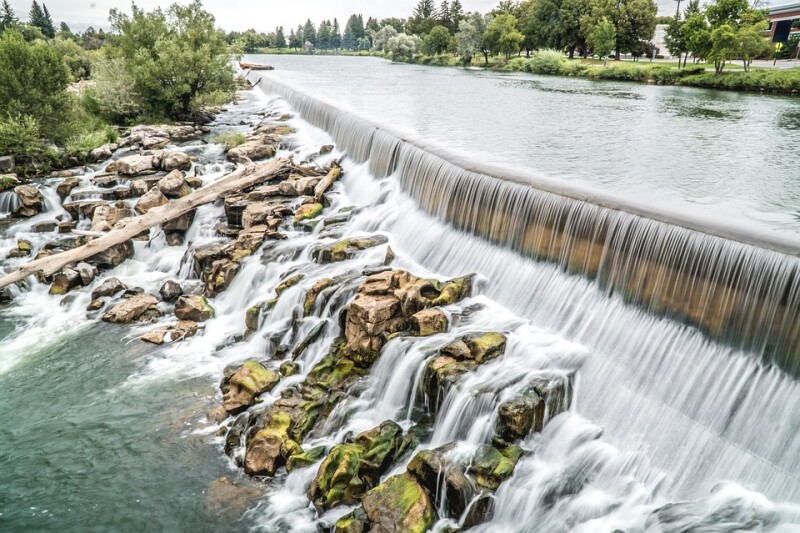
Photo Courtesy Pixabay
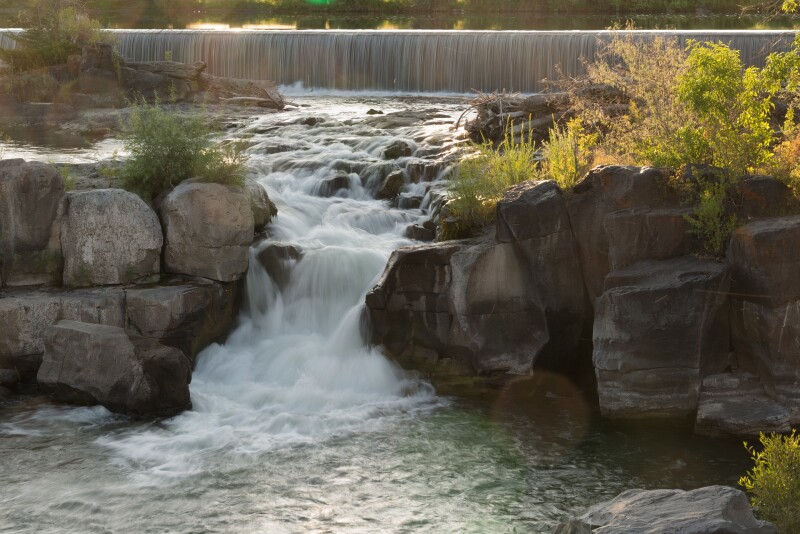
Idaho Falls Photo Courtesy Pixabay
On June 22, 1895, the Great Feeder (“the world’s then-largest irrigation canal”), started to reroute water from the Snake River, which helped turn some of the desert of Idaho Falls, into green farmland. Farmers of Idaho Falls started to grow sugar beets, potatoes, peas, grains, and alfalfa, and as a result, Idaho Falls quickly became “one of the most productive agricultural regions in the United States.” Idaho Falls began to flourish and expanded regularly into the 20th century. In 1949, the Atomic Energy Commission opened the Nuclear Reaction Testing Station in the desert, west of Idaho Falls. On December 20, 1951, a nuclear reactor built at the Idaho Falls site “produced useful energy for the first time in history.” More than 50 nuclear reactors were successfully built at the testing station near Idaho Falls, while today, only three remain active. Idaho Falls is a fun city in eastern Idaho to explore, with lots of outdoor beauty to take in.
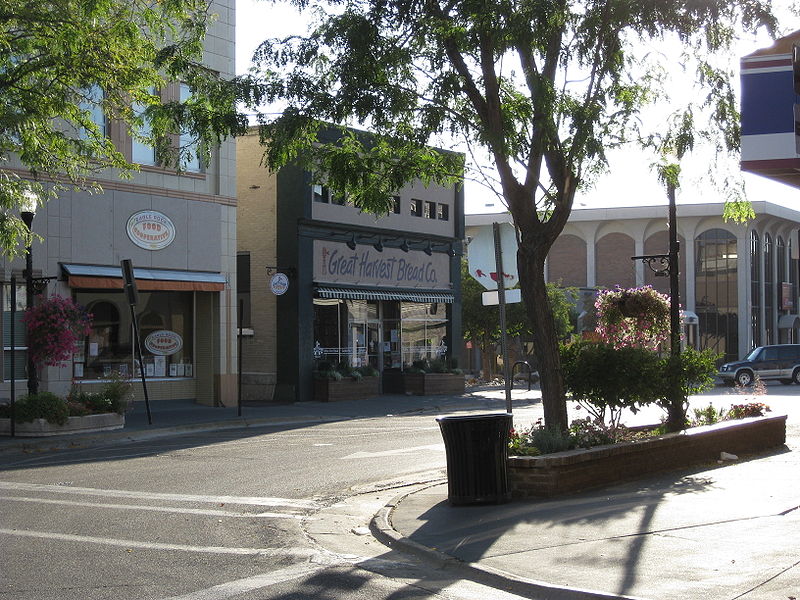
“A” Street in Downtown Idaho Falls Photo Courtesy Eric Fredericks/Wikimedia Commons
Snake River Greenbelt Trail/Idaho Falls River Walk
The Snake River Greenbelt is a 10.6-mile loop trail that passes by the waterfalls of Idaho Falls, a Japanese Garden, and many restaurants. You may walk around the Snake River, using the Snake River Greenbelt Trail, which is also part of the Idaho Falls River Walk. The Idaho Falls River Walk is a peaceful activity to take part in, while enjoying a great view of the Snake River. Exploring the Idaho Falls River Walk is a great way to enjoy the fresh air and scenery of Idaho Falls with your family. The River Walk offers free parking and is easy to access.
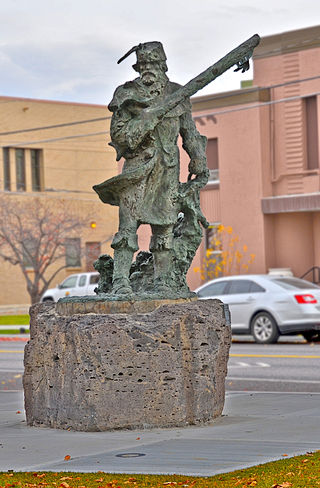
Sculpture of Snake River Fur Trapper by Roy Reynolds on the bank of the Snake River (along the River Walk) in Idaho Falls Photo Courtesy Idahomiller/Wikimedia Commons
The Snake River Greenbelt Trail is Trip Advisor’s #1 recommended attraction to visit in Idaho Falls, while Idaho Falls River Walk is Trip Advisor’s #2 recommended attraction to visit in Idaho Falls. You may also want to check out the Giant Eagle Waterfall Nest, which is located on the south end of the Idaho Falls River Walk and is Trip Advisor’s #5 recommended attraction to visit in Idaho Falls.
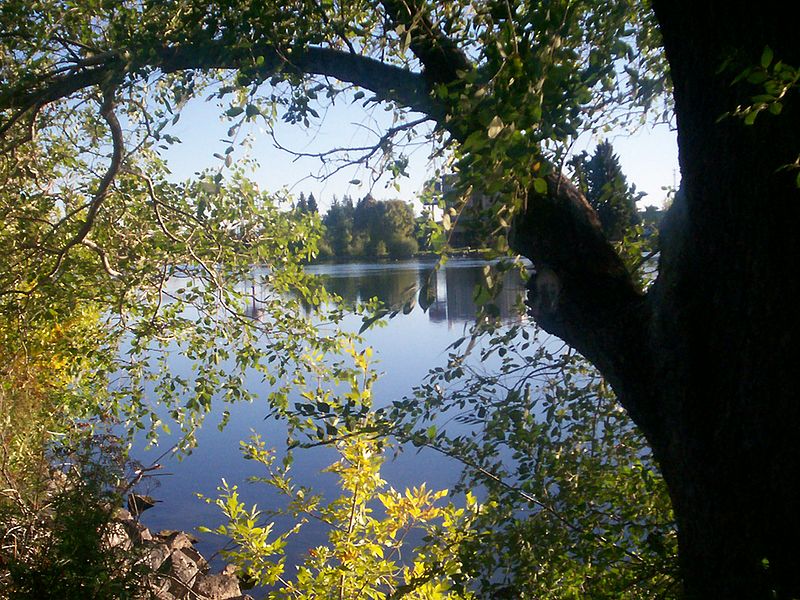
Snake River seen through the tress on Snake River Greenbelt Trail Photo Courtesy Staplegunther/Wikimedia Commons
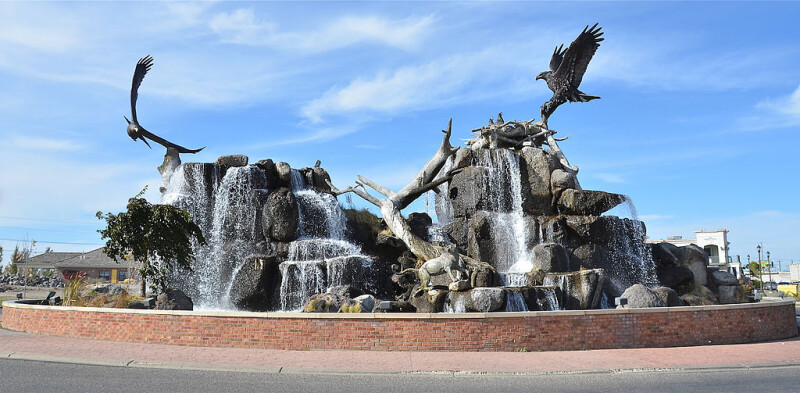
Giant Eagle Waterfall Nest Photo Courtesy Idahomiller/Wikimedia Commons
Idaho Falls Zoo at Tautphaus Park
Idaho Falls Zoo at Tautphaus Park is a fun, family-friendly attraction that includes “more than 300 individual animals, representing 130 species from around the globe.” Idaho Falls Zoo is known as “the best little zoo in the west.” Idaho Falls Zoo at Tautphaus Park is open for the spring, summer, and fall each year, and closes for the winter. Ticket prices for Adults (age 13-61) cost $8, Seniors (age 62 and over) cost $6.50, Children (age 4-12) cost $5, while Children (3 and under) can enter the park for free. Zoo members can also enter the park for free, with a valid membership card and photo ID. Military and city workers receive a discount on tickets and must show a valid ID. Idaho Falls Zoo at Tautphaus Park is Trip Advisor’s #3 recommended attraction to visit in Idaho Falls.
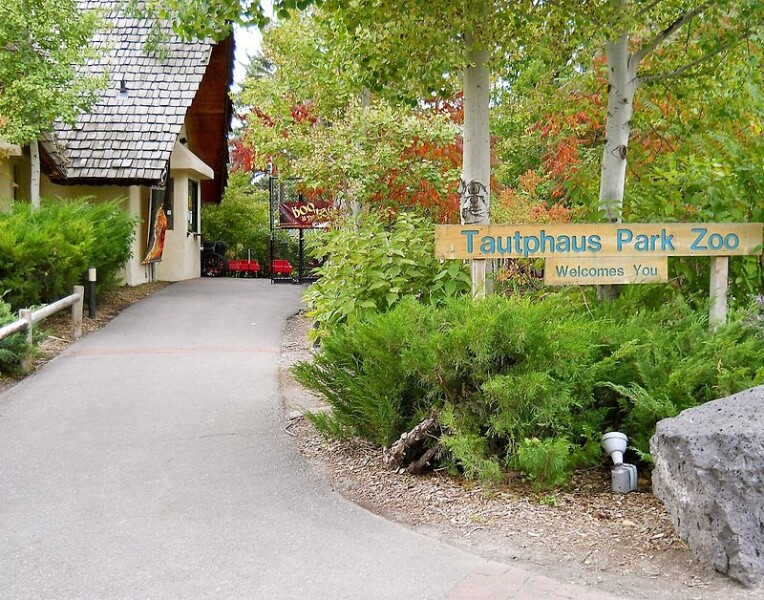
Entrance to Idaho Falls Zoo at Tautphaus Park Photo Courtesy Idahomiller/Wikimedia Commons
Hell’s Half Acre Lava Field
Hell’s Half Acre Lava Field is a basaltic lava plain “located on the Snake River Plain of Idaho” 25 miles west of Idaho Falls, Idaho and 30 miles north of Pocatello, Idaho. It is estimated by geologists that Hell’s Acre Lava Field was created about 3250 BC.
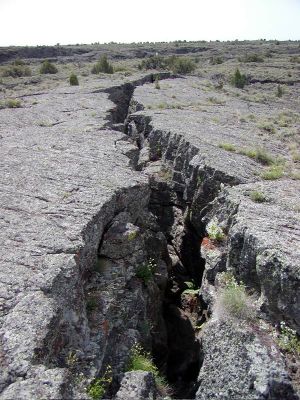
A rift in the lava plain at Hell’s Half Acre in Idaho Photo Courtesy Wikipedia
The lava field was formed by the Lava Ridge-Hell’s Half Acre fissure vent. Visitors can enter the Lava Trail System (“formerly Hell’s Half Acre”) through the pedestrian access walkway. In 1976, the National Park Service named the northwestern section of Hell’s Half Acre Lava Field a National Natural Landmark. Hell’s Half Acre Lava Field is a neat place in the Idaho Falls area to visit and is Trip Advisor’s #4 recommended attraction to visit in Idaho Falls.
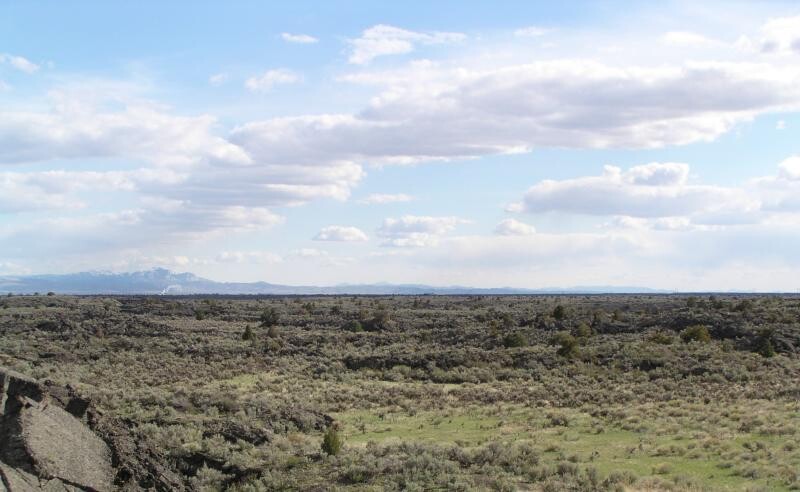
Hell’s Half Acre Photo Courtesy Steve Spring/Wikimedia Commons
Copper Rill Restaurant
Copper Rill Restaurant is a tasty eatery in Idaho Falls. The menu at Copper Rill Restaurant offers delicious appetizers such as Curried Chicken Skewers served under a mild Golden Curry Sauce with Green Onions and Sesame Seeds, Baked Brie Cheese stuffed with Sun Dried Tomato and Basil Compote, served with Crostini, and Maryland Style Crab Cakes baked golden and served with a Lemon and Caper Dill Beurre Blanc Sauce. Copper Rill also serves up some delectable pasta and entrees like Sautéed Shrimp and Chicken tossed in Fusilli Pasta with a rich Lobster Sauce and topped with fresh parmesan cheese, Italian Sausage Pasta with Linguine, Bell Pepper, Mushroom, Basil, and Onion, in a zesty Marinara Sauce, topped with fresh parmesan cheese, Black and Blue Filet Mignon served over a creamy Gorgonzola sauce and Roasted Garlic Mashed Potato, Baked Haddock topped with a Lobster Mango Salsa and served with Confetti Orzo, and the Rendered Duck Breast prepared to temperature with Plum Wine Sauce and a Basmati Rice blend.
Copper Rill Restaurant also serves Madagascar Vanilla Bean Crème Brûlée, New York Cheesecake, and Molten Chocolate Cake with Raspberry Sauce for dessert. Copper Rill Restaurant is open for dinner Monday-Saturday from 4:00pm-8:30pm. Reservations are recommended. Copper Rill Restaurant is Trip Advisor’s #1 recommended restaurant to dine at in Idaho Falls.
Visit Idaho Falls today and enjoy the natural surrounding beauty the city has to offer. For more information on Idaho Falls, check out the official tourism board website or visit the Eastern Idaho Visitor Information Center at 355 River Parkway in Idaho Falls.
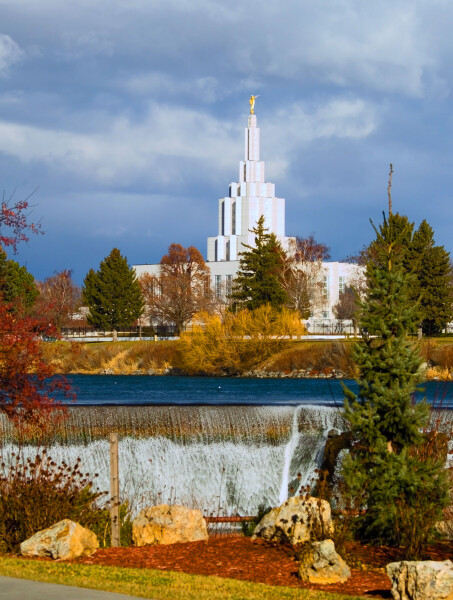
The Idaho Falls Temple of The Church of Jesus Christ of Latter-day Saints and the waterfalls of Idaho Falls Photo Courtesy Merrill Humberg/Wikimedia Commons




